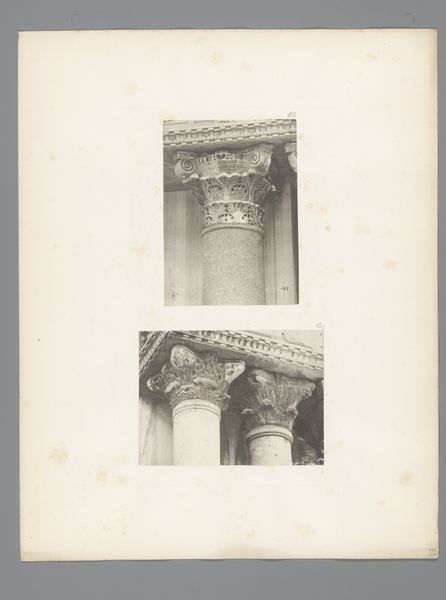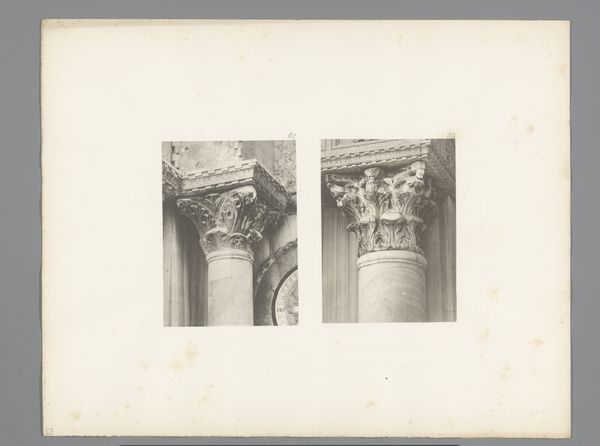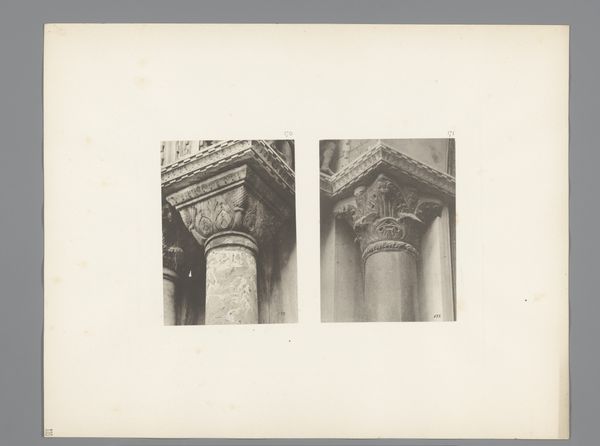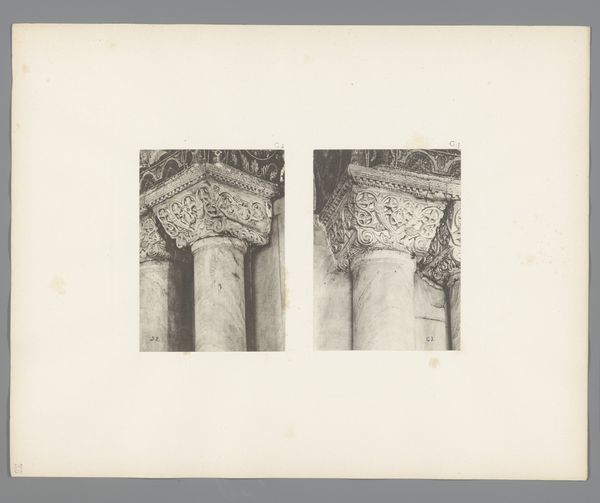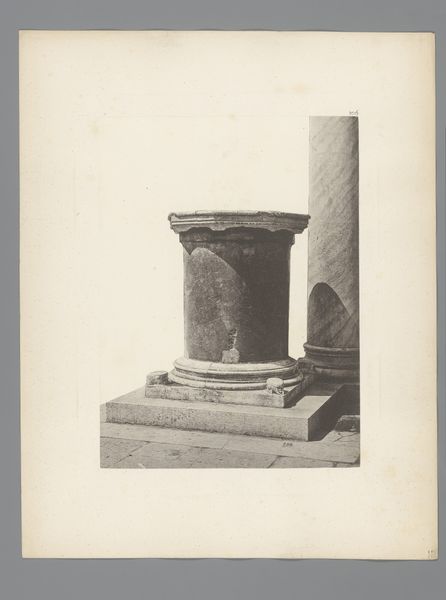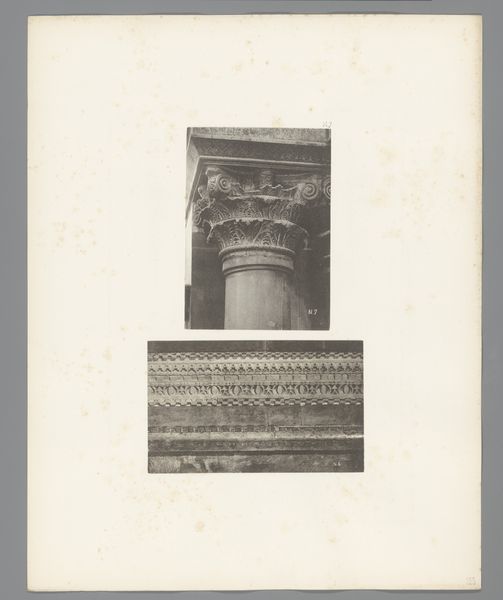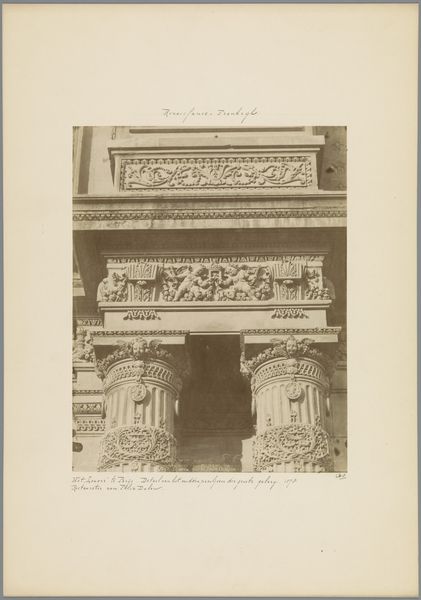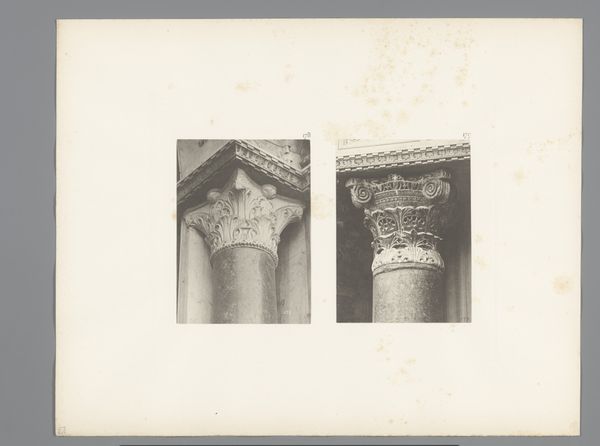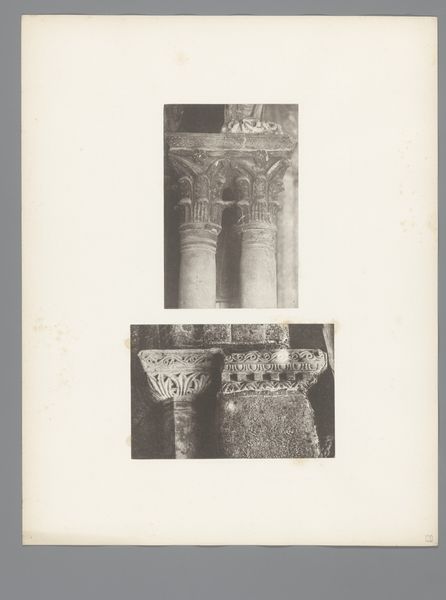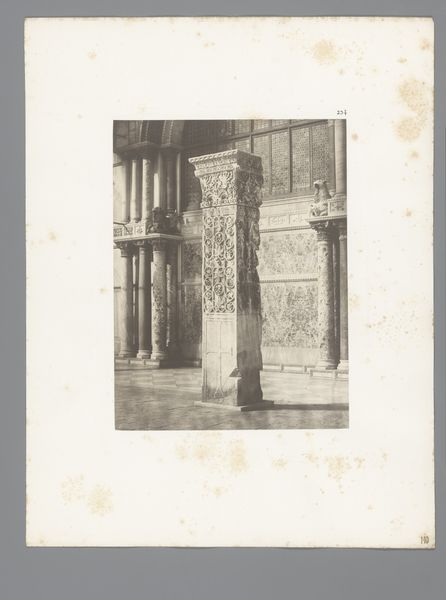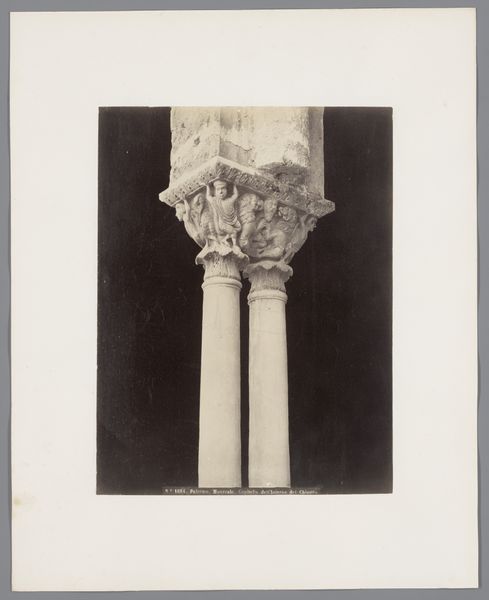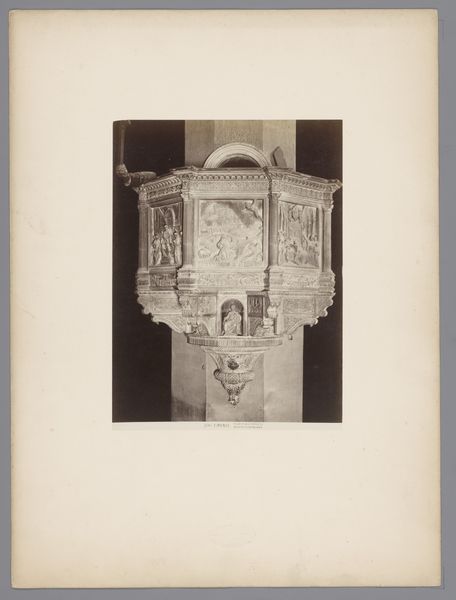
Twee afbeeldingen van Korinthische kapitelen van de San Marco in Venetië before 1884
0:00
0:00
print, photography, architecture
#
white colour balance
#
faded colour hue
#
aged paper
#
pale palette
#
pastel soft colours
#
muted colour palette
#
pale colours
# print
#
light coloured
#
greek-and-roman-art
#
landscape
#
classical-realism
#
white palette
#
photography
#
geometric
#
ancient-mediterranean
#
soft colour palette
#
architecture
Dimensions: height 394 mm, width 311 mm
Copyright: Rijks Museum: Open Domain
Curator: Ah, this striking image by Carl Heinrich Jacobi, dating to before 1884, presents "Twee afbeeldingen van Korinthische kapitelen van de San Marco in Venetië"—"Two Images of Corinthian Capitals of San Marco in Venice." What's your initial take? Editor: Stark elegance. A certain faded glory captured with such restraint it’s almost like holding my breath looking at it. I get this whispering grandeur... do you know what I mean? Curator: Precisely. The San Marco, of course, is not just a basilica but a statement of Venetian power, a repository of Byzantine influence. Jacobi's choice to isolate these Corinthian capitals speaks volumes. Editor: Isolation… that's it. It's romantic in the ruinous, almost melancholy way. You see the ambition etched in stone, the relentless detail… then you realize it's all adrift in time. A beautiful relic of its own power? Curator: Absolutely. And it's not simply documentation. Jacobi, working in a time of intense architectural revivalism, presents these details as fragments, perhaps inviting viewers to imagine their role within a larger, arguably, declining, social framework. The grand narratives crumble to dust, don't they? What are your feelings regarding photography’s rise to document these buildings, rather than painting? Editor: Oof, tricky question. As for these buildings though, photography captures their soul, it makes tangible a memory or past event... gives history weight, especially at a moment when grand empires felt like they were in decline. What makes art valuable isn’t the grand idea necessarily, it's seeing it, face to face with it, or like this image, in print. That accessibility, that reach—it transforms the artwork itself, giving the viewer their own perspective of what may have happened in the past. Curator: Well said. It underscores how photography doesn’t just reflect architecture; it actively shapes our engagement with it, layering meaning upon existing structures through light, shadow, and context. I find it compelling to witness the intersection of decay and documentation. Editor: Me too. To look closer and appreciate how light plays upon that detail; It seems there is as much decay as ingenuity that crafted each frond and flourish on display. A bittersweet meditation. Thanks for guiding my observations! Curator: A pleasure. Hopefully, the dialogue will encourage our listeners to engage a new appreciation of classical pieces by offering fresh personal impressions!
Comments
No comments
Be the first to comment and join the conversation on the ultimate creative platform.
